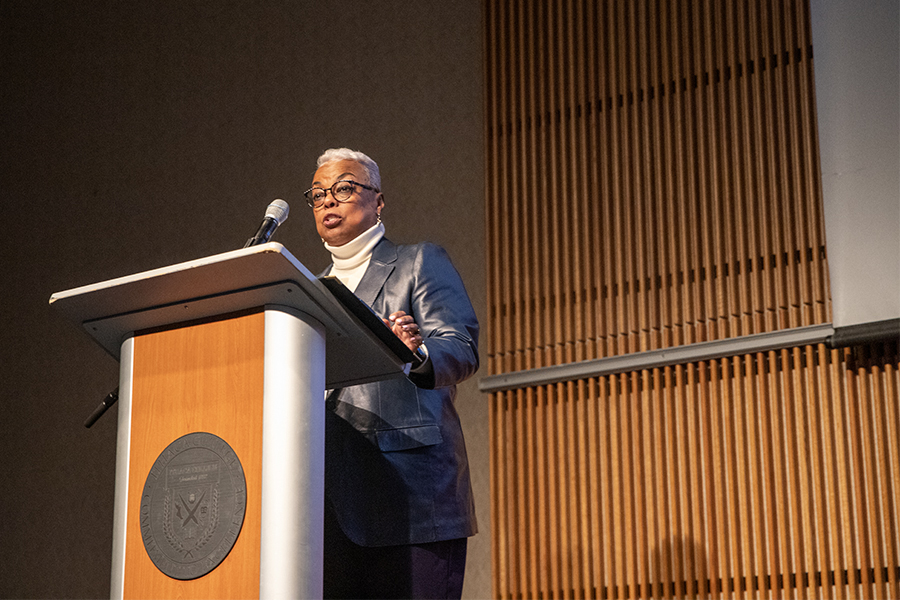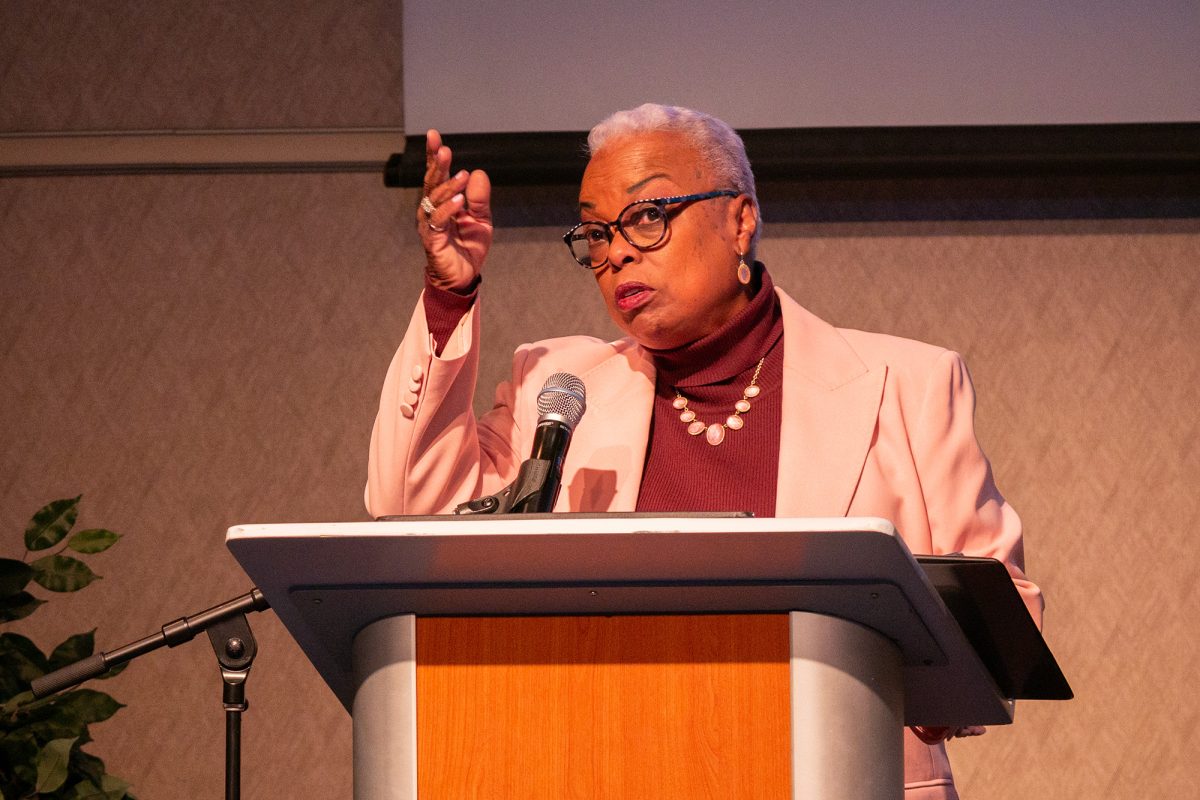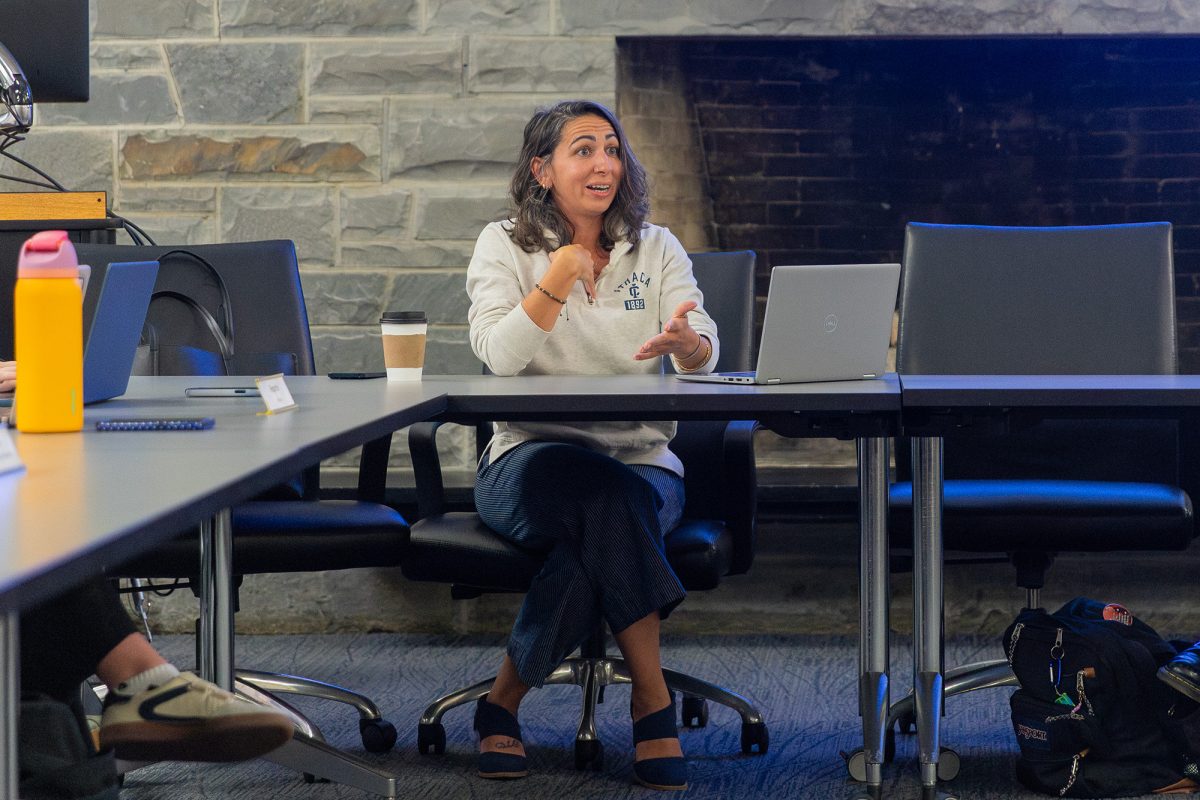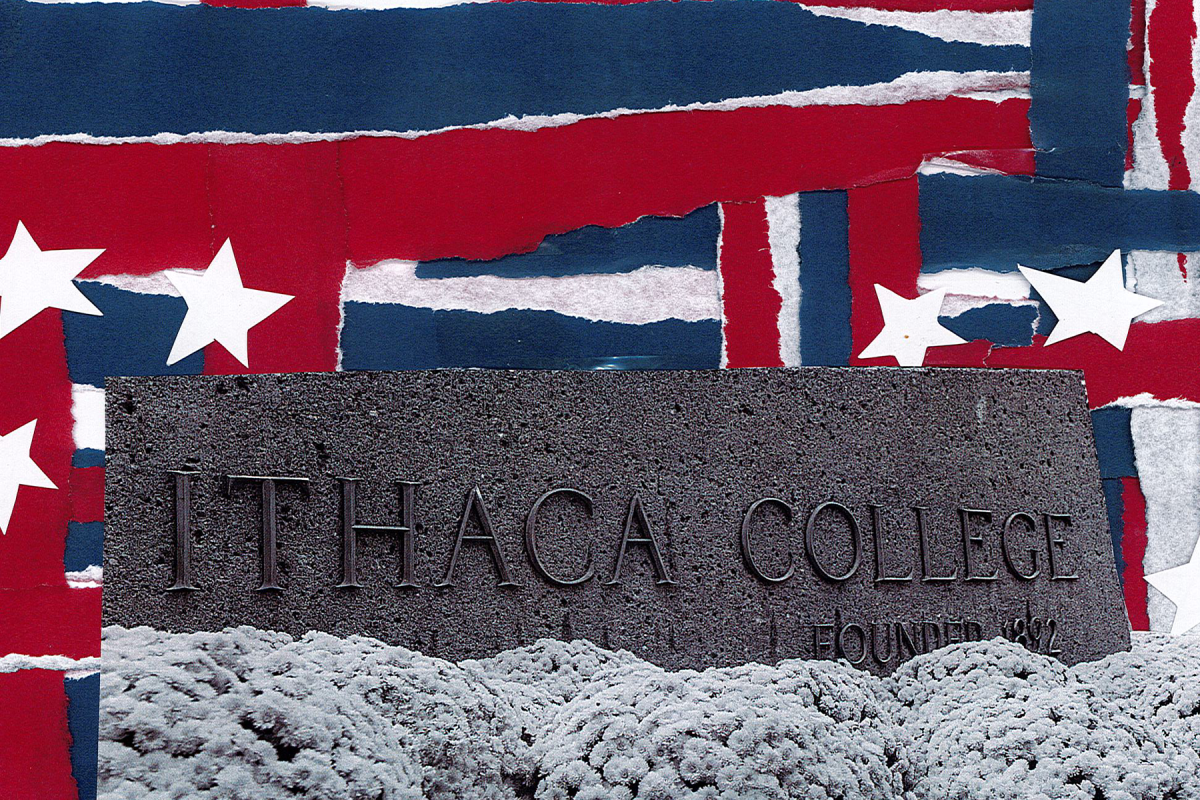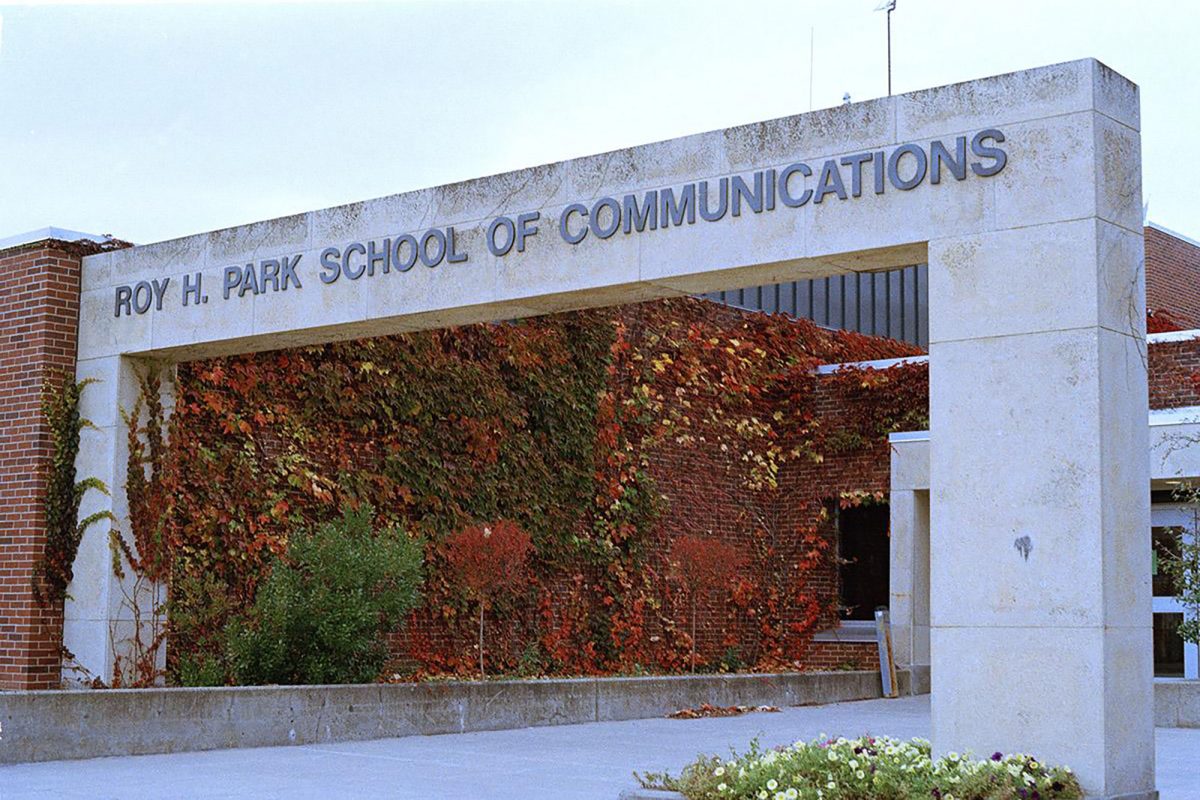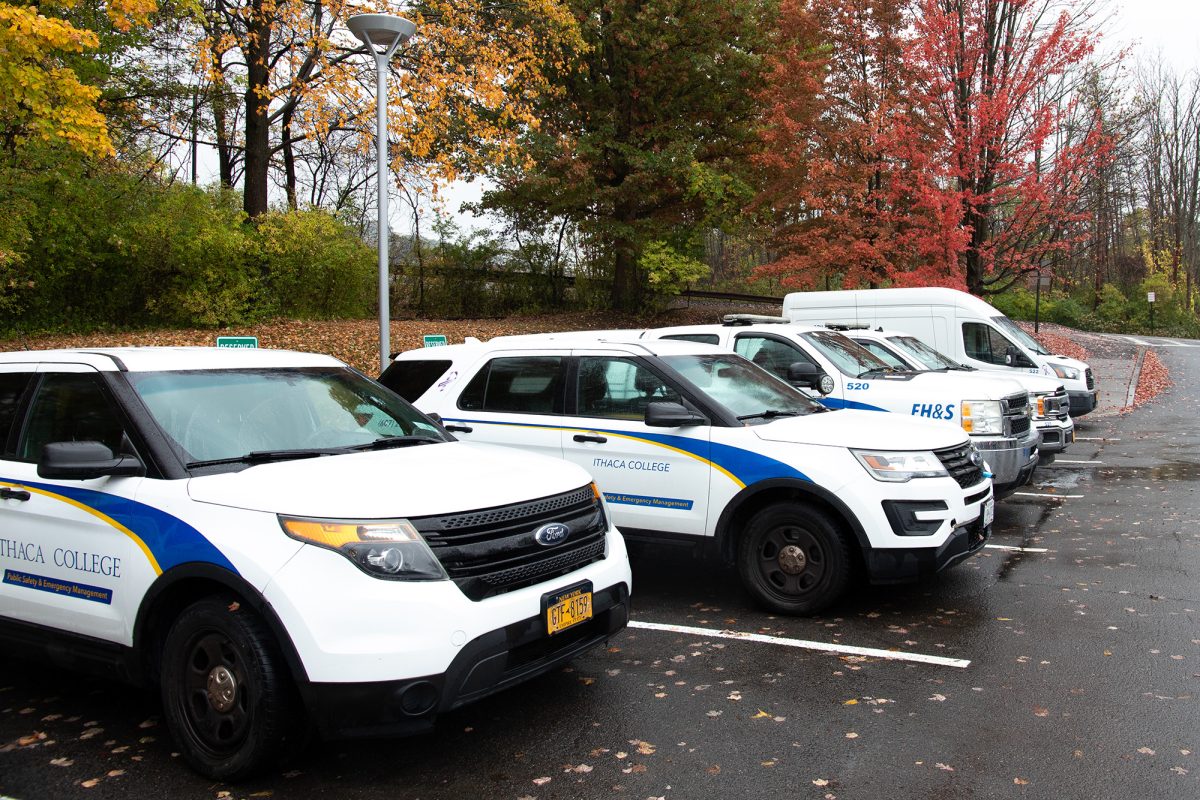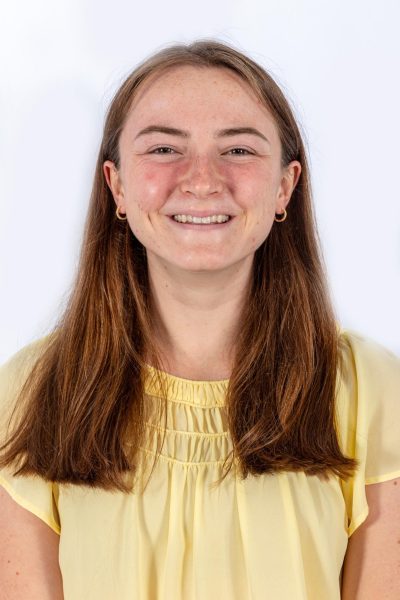Ithaca College administrators shared updates on enrollment and the college’s finances going into the 2025-26 academic year at the State of the College meeting May 20. The meeting followed the May 15-17 Board of Trustees meeting, where the board approved a budget for fiscal year 2026.
President La Jerne Cornish opened the meeting by congratulating the audience on a successful academic year and thanking everyone who participated in the 130th undergraduate Commencement ceremony May 18.
Enrollment
Rakin “Rock” Hall, vice president for Enrollment Management and Student Success, said the college surpassed its application goal, receiving 12,710 applications from prospective first-year students for Fall 2025. He said the college received 1,191 deposits for Fall 2025. He said this is approximately an 11% increase from the net deposits — which only includes deposits that have not been canceled — received for Fall 2024.
“We’re still communicating with non deposits,” Hall said. “We’re shoring up our current deposits and we’re staying omnidirectional with the partnership of Mark Eyerly [vice president for Marketing and Communications] and his team with admitted students, parents and families, as we cast the net out for next year.”
Hall said the college has received 66 deposits from transfer students, one less than the net deposits received for Fall 2024. He said the college could receive more deposits from transfer students throughout the summer.
Hall said the college received more deposits for Fall 2025 than for Fall 2021 and Fall 2024, but less than for Fall 2022 and Fall 2023.
“As we’re trending right now, we will hit our [enrollment] target moving forward,” Hall said.
FY 2026 budget
Tim Downs, chief financial officer and vice president of Finance and Administration, said the college has been working on a plan throughout the 2024-25 academic year to get back to a balanced budget by FY 2028. He said this plan includes obtaining $15.3 million through revenue enhancements and reducing $11 million in expenses for FY 2026.
“I think we’ve all talked about [how] we can’t cut our way to success,” Downs said. “This is really the approach we set out to put forth.”
The college worked with the Huron Consulting Group to do a budget and resource planning study, which aimed to reduce the budget deficit. The college previously hired Huron in 2012 to find ways to reduce costs, which resulted in the college cutting 47 position lines during the 2014-15 academic year.
Downs said the college’s enrollment target for FY 2026 is around 1,200 students. He said the college decided to reduce its target in the budget for FY 2026 from the 1,310 students in the budget forecast for FY 2025 because it missed its enrollment target by around 200 students.
“We knew we had to go through that exercise [of reducing the enrollment target] and that’s why we had to go in and take that $11 million worth of expense out,” Downs said.
Downs said the college will still be able to provide its current discount rate — the portion of the cost of attendance students pay after receiving aid — of around 60% with its reduced enrollment target. He said the college is deferring annual salary increases for FY 2026 to Jan. 1, 2026. Salary increases at the college were last frozen from July 2020 to July 2021 as a cost-saving measure during the COVID-19 pandemic.
Dave Gondek, chair of the college’s Faculty Council for the 2024-25 academic year and associate professor in the Department of Biology, asked if the delay in salary bumps will be permanent or if it is just for FY 2026.
Cornish said that after FY 2026, the salary increments will go back to their normal cycle. She said employees will receive an increase in January 2026 for FY 2026 and pending approval from the Board of Trustees, they will receive the increment for FY 2027 in July 2026.
“We want this to be a one time action,” Cornish said. “But it is a necessary action at this time.”
Cornish said specific steps in reducing the spending in the budget for FY 2026, including the elimination of positions, will be shared on a rolling basis with faculty and staff by their division head or supervisor.
Sara Levy, chair of the Department of Education, asked if there could be a yearly meeting where the vice presidents share what changes happened in their divisions in the past year.
Cornish agreed to having an annual meeting where changes in divisions over the past year would be shared.
Cornish thanked the campus community for supporting the college through its work in developing a plan to achieve a balanced budget by FY 2028.
“They wanted us to get [the budget deficit] to zero,” Cornish said. “And I’m not talking out of turn. I’m just being me. They wanted us to get to zero faster. But we took into account the impact of services and what we do with this institution and continuing to keep our students at the center of what we do. We are taking a measured approach to this work because we believe it is the right thing to do.”


